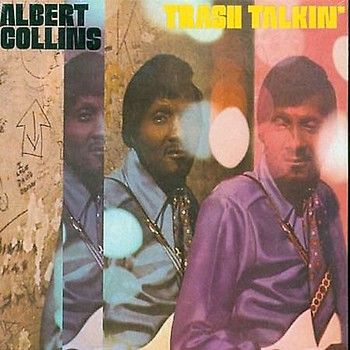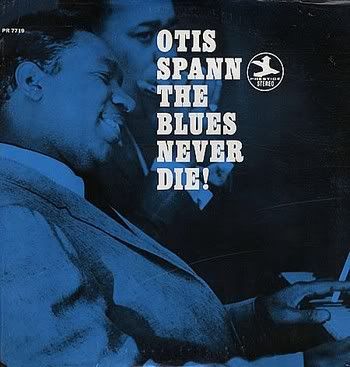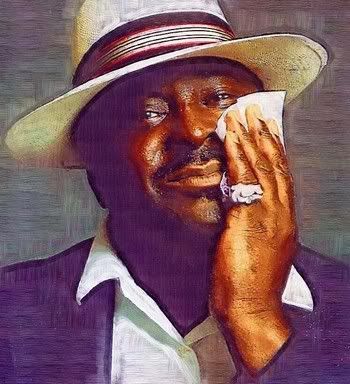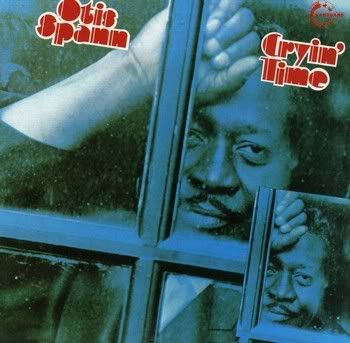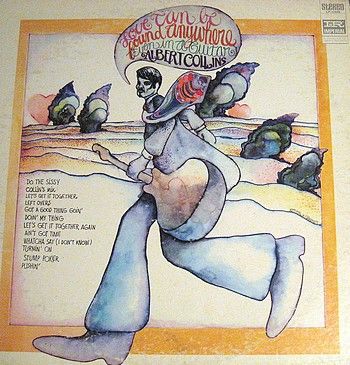
Albert Collins - Love Can Be Found Anywhere (Even in a Guitar) - 1968 - Imperial
Albert Collins, the late, great Texas bluesman was famous for his unique Telecaster technique, in which he employed extensive use of reverberation, unorthodox minor-key tunings, staccato picking, and a trebly, percussive style. From the 1950s onwards, his unique laid back sound was immediately recognizable in the blues guitar world, a sound which influenced many rock and blues guitarists. This early album from Albert Collins demonstrates the great man's technique. The album is full of warm soulful late 60's funk. Albert uses many different blues stylings, and there is some really stinging guitar work, great horn charts, and funky drum breaks. There is info on Albert Collins' great "The Ice Axe Cometh" album @ ALBCOL/IAC and check out the brilliant Robert Cray & Albert Collins' "In Concert" album @ ALBCOL/ROBCRAY/INCONC Tty and find the time to listen to Albert Collins classic "Ice Pickin'" album
TRACKS / COMPOSERS
A1 Do the Sissy - Stephen Hollistar
A2 Collins' Mix - Albert Collins
A3 Let's Get It Together - Albert Collins
A4 Got a Good Thing Goin' - Albert Collins
A5 Left Overs - Albert Collins
A6 Doin' My Thing - Mulloy
B1 Let's Get It Together Again - Albert Collins
B2 Ain't Got Time - Stephen Hollistar
B3 Turnin' On - Stephen Hollistar
B4 Whatcha Say (I Don't Know) - Albert Collins
B5 Pushin' - Stephen Hollistar
B6 Stump Poker - Bill Rice, Jerry Foster
MUSICIANS
Albert Collins (guitar, vocals)
Jim Dickinson (piano and guitar)
Charlie Freeman (guitar)
Tommy McClure (bass)
Mike Utley (organ)
Sammy Creason (drums)
N.B: Many artists on the Imperial label around this time, were backed by the Dixie Flyers. The line-up above may not be the correct 1968 formation. Any corrections would be appreciated.
ABOUT ALBERT COLLINS [ from www.encyclopedia.com/doc/1G2-3430500019.html ]
Although he went largely unrecognized by the general public during most of his career, the Texas-born musician Albert Collins eventually was acknowledged as one of the most talented and distinctive blues guitarists of his era. He established his fame by creating a unique sound with his Fender Telecaster guitar that was based on unusual tunings and scorching solos. His nickname "Iceman" was bestowed on him because his guitar sounds were piercing and could scorch the ears, just as icicles were sharp and could burn. Peter Watrous wrote in the New York Times that "Mr. Collins made his reputation by combining savage, unpredictable improvisations with an immediately identifiable tone, cold, and pure." "In the Iceman's powerful hands," said Jas Obrecht in Guitar Player, "that battered Tele could sass and scold like Shakespeare's fire, jab harder than Joe Louis, squawk like a scared chicken, or raise a graveyard howl." Musicians ranging from Jimi Hendrix to Canned Heat to Robert Cray have cited Collins as having a major influence on their styles. He was especially known for his frenzied live performances during which he would often stroll into the audience and dance with the fans, his playing arena extended by a 100-foot extension cord attached to his electric guitar. Often he would start talking a blue streak, regaling his fans with hilarious and lewd remarks. While his crowd-pleasing improvisations made him an extremely popular performer over the years, his recordings sold erratically until late in his career. His ultimate fame was also delayed by the long-time domination of Chicago blues over the Texas-based version. While the Chicago blues of performers such as Muddy Waters and Howlin' Wolf emphasized group jam sessions, the Texas variety was more of a showcase for individual talent where guitarists tried to outplay each other. Few could compete with Collins in these "bouts," but his talent didn't bring him widespread fame until he was brought to the attention of rock fans in the late 1960s. After moving to the Houston ghetto as a child, Collins first became interested in music while listening to the pianist in his church. He took piano lessons at school, then learned about playing guitar from his cousins, blues guitarists Willow Young and Lightnin' Hopkins. His cousins turned out to be major influences on Collins's trademark style. He emulated Young's style of playing without a pick, and learned to tune the guitar in a minor key from Hopkins. By using his fingers rather than a pick, his playing developed a more percussive sound. Collins claimed in Guitar Player that he made his first guitar out of a cigar box, using hay-baling wire for strings. Through his teen years he wanted to be an organist, but his interest in that instrument waned after his organ was stolen. While Collins said that his greatest influence was Detroit's John Lee Hooker, he spent much of his youth listening to the big band music of artists such as Jimmie Lunceford, Count Basie, and Tommy Dorsey. At one time he considered becoming a jazz guitarist, and his playing often shifted between blues and the horn-driven sound of a jazz big band. After Collins switched form acoustic to electric guitar, he began listening to T-Bone Walker, Clarence "Gatemouth" Brown, and B.B. King to refine his talent. Brown was a key influence due to his horn-driven sound that Collins found especially exciting. Collins emulated Brown by starting to play with a capo and a Fender guitar, an instrument that would become inextricably linked to him. Since he couldn't afford to buy the guitar at that time, he started by having a Fender Telecaster neck put on another guitar. By age 15 Collins was playing at local blues club with Brown. Then he formed his own group, the Rhythm Rockers, in 1949, with which he performed at honky-tonks in Houston's all-black Third Ward on weekends while working during the week as a ranch hand and truck driver. Next on his career path was three years of touring with singer Piney Brown's band. In the early 1950s, Collins's talent earned him positions as session players with performers such as Big Mama Thornton. He later replaced future guitar great Jimi Hendrix in Little Richard's band. By this time Collins had established himself as a great eclectic who could produce unusual sounds with his guitar playing. As David Gates wrote in Newsweek, Collins "tore at the string with his bare hands instead of the ostensibly speedier pick, used unorthodox minor tunings instead of the more versatile standard ones and unashamedly clamped on a capo (a bar across the fingerboard, which raises the pitch of the strings), making the already stinging Telecaster sound even more bright and piercing." Collins cashed in on the popularity of instrumentals ushered in by performers such Booker T., Duane Eddy, and Link Wray in the late 1950s. His first recording, an instrumental called "The Freeze," featured extended notes played in a high register. Collins told Guitar Player that the record sold about 150,000 copies in a mere three weeks.
For the Record . . .
Born on May 3, 1932, in Leona, TX; died on November 24, 1993, of lung cancer, in Las Vegas, NV; married Gwendolyn Collins, 1968. Born to a sharecropping family; moved to the black ghetto of Houston, TX, as a child; learned to play piano as a youth and grew up listening to big-band music of Jimmie Lunceford, Count Basie, Louis Jordan, and Tommy Dorsey; learned to play guitar from cousins Willow Young and Lightnin' Hopkins; began playing blues at local clubs with Clarence "Gatemouth" Brown, 1947; played with his own group, the Rhythm Rockers while working days on a ranch and driving a truck, 1949-51; played with Piney Brown's band, early 1950s; became session player, 1953; recorded and performed with Little Richard, Big Mama Thornton, and others, 1950s; recorded first single, "The Freeze," 1958; recorded million-selling single, "Frosty," 1962; released first major album, Truckin' with Albert Collins, for Blue Thumb, 1965; signed with Imperial label, 1968; sang for the first time on an album, Love Can Be Found Anywhere (Even in a Guitar), 1968; toured extensively throughout California, late 1960s; performed at Newport Jazz Festival and Fillmore West, 1969; stopped performing and began working for a building contractor in Los Angeles, 1971; signed with Alligator record label, and formed the Icebreakers, 1977; performed at Montreux Jazz Festival, 1975; performed with George Thorogood at Live Aid Concert, 1985; was chief attraction at American Guitar Heroes concert at Carnegie Hall, New York City, 1985; performed on Musicruise Dayliner circling Manhattan on opening night of JVC Jazz Festival, 1987; appeared in film, Adventures in Babysitting ; was subject of television documentary on PBS, Ain't Nothin' But the Blues, 1980s; released albums until his death, 1993. Awards: W.C. Handy Award, Best Blues Album for Don't Blow Your Cool, 1983; Grammy Award, Best Blues Album for Showdown (with Robert Cray and Johnny Copeland), 1986; W.C. Handy Award, Best Blues Artist of the Year, 1989. Collins lost a chance to play with soul music star James Brown in the late 1950s because he couldn't read music. Meanwhile, he still didn't feel that he could make his living entirely from guitar playing, and he worked as truck drivers and as a mixer of paint for automobiles. Then he hit the blues big time with his recording of "Frosty," released in 1962, that sold over a million copies and became a popular blues standard. This song confirmed his reputation as a player of "cold blues," and his producer urged him to continue this theme in his song and album titles. He even named his backup band The Icebreakers. With just his fingers and his capo that he would move up and down the neck of his guitar, Collins produced a wide range of effects ranging from the sound of car horns to footsteps in the snow. He released a series of singles for small record labels such as Kangaroo, Great Scott, Hall, Fox, Imperial, and Tumbleweed that had moderate success at the regional level. He continued playing through the 1960s, but recording very sporadically and was unable to tour because of his day job. According to Peter Watrous in the New York Times, Collins' first significant album was Truckin' with Albert Collins in 1965. The album featured what would become famous blues recording of his previously released "Frosty," "Sno-Cone," and other songs. Following the release of his compilation album, The Cool Sound of Albert Collins, he quit his paint job and moved to Kansas City in 1966. While there he met his future wife, Gwendolyn, who would become an important motivator for him as well the composer of some of his best-known songs. Among her compositions for Collins were "There's Gotta Be a Change" and "Mastercharge." Blues music gained in popularity in the late 1960s due to various rock performers such as Jimi Hendrix and Canned Heat stressing the importance of blues as inspiration for their work. A major boost to Collins' career came as the result of interest in him by Bob Hite. Hite recommended Collins to the Imperial, which was affiliated with Canned Heat's label, Liberty/USA. His understated singing style showed up on a recording for the first time on Love Can Be Found Anywhere (Even in a Guitar), the first of three albums that he recorded for Imperial. Later he recorded albums for Blue Thumb, then Bill Szymczyk's Tumbleweed label in Chicago in 1972. Appearances at the Newport Jazz Festival and at Fillmore West in 1969 gained Collins more exposure and acceptance with young rock audiences. He also appeared at the Montreux Jazz Festival in 1975. While jamming in the 1970s in Seattle, he met and played with Robert Cray. More than a decade later, he teamed up with Cray and Johnny Copeland on a Grammy Award-winning blues album, Showdown. As late as 1971, when he was 39 years old, Collins found it necessary to work in construction because he couldn't make a sufficient living from his music. More comfortable playing for small audiences than mass gatherings, Collins nevertheless agreed to perform in the 1985 Live Aid Concert which was aired to an estimated 1.8 billion viewers. This exposure, as well as appearances in a Seagram's Wine Cooler commercial, on Late Night with David Letterman, and in the film Adventures in Babysitting ensured Collins' recognition as a leading blues guitarist. His popularity and discography continued to grow until his untimely death from liver cancer in November of 1993.
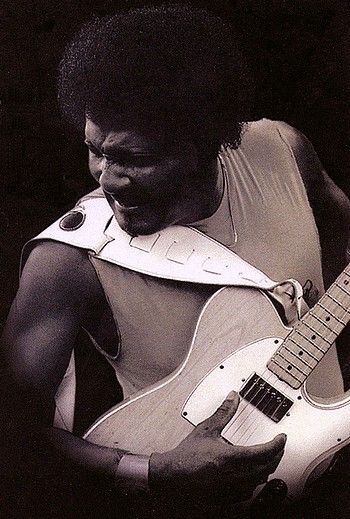
MORE ABOUT ALBERT COLLINSAlbert Collins, "The Master of the Telecaster," "The Iceman," and "The Razor Blade" was robbed of his best years as a blues performer by a bout with liver cancer that ended with his premature death on November 24, 1993. He was just 61 years old. The highly influential, totally original Collins, like the late John Campbell, was on the cusp of a much wider worldwide following via his deal with Virgin Records' Pointblank subsidiary. However, unlike Campbell, Collins had performed for many more years, in obscurity, before finally finding a following in the mid-'80s. Collins was born October 1, 1932, in Leona, TX. His family moved to Houston when he was seven. Growing up in the city's Third Ward area with the likes of Johnny "Guitar" Watson and Johnny "Clyde" Copeland, Collins started out taking keyboard lessons. His idol when he was a teen was Hammond B-3 organist Jimmy McGriff. But by the time he was 18 years old, he switched to guitar, and hung out and heard his heroes, Clarence "Gatemouth" Brown, John Lee Hooker, T-Bone Walker and Lightnin' Hopkins (his cousin) in Houston-area nightclubs. Collins began performing in these same clubs, going after his own style, characterized by his use of minor tunings and a capo, by the mid-'50s. It was also at this point that he began his "guitar walks" through the audience, which made him wildly popular with the younger white audiences he played for years later in the 1980s. He led a ten-piece band, the Rhythm Rockers, and cut his first single in 1958 for the Houston-based Kangaroo label, "The Freeze." The single was followed by a slew of other instrumental singles with catchy titles, including "Sno-Cone," "Icy Blue" and "Don't Lose Your Cool." All of these singles brought Collins a regional following. After recording "De-Frost" b/w "Albert's Alley" for Hall-Way Records of Beaumont, TX, he hit it big in 1962 with "Frosty," a million-selling single. Teenagers Janis Joplin and Johnny Winter, both raised in Beaumont, were in the studio when he recorded the song. According to Collins, Joplin correctly predicted that the single would become a hit. The tune quickly became part of his ongoing repertoire, and was still part of his live shows more than 30 years later, in the mid-'80s. Collins' percussive, ringing guitar style became his trademark, as he would use his right hand to pluck the strings. Blues-rock guitarist Jimi Hendrix cited Collins as an influence in any number of interviews he gave. Through the rest of the 1960s, Collins continued to work day jobs while pursuing his music with short regional tours and on weekends. He recorded for other small Texas labels, including Great Scott, Brylen and TFC. In 1968, Bob "The Bear" Hite from the blues-rock group Canned Heat took an interest in the guitarist's music, traveling to Houston to hear him live. Hite took Collins to California, where he was immediately signed to Imperial Records. By later 1968 and 1969, the '60s blues revival was still going on, and Collins got wider exposure opening for groups like the Allman Brothers at the Fillmore West in San Francisco. Collins based his operations for many years in Los Angeles before moving to Las Vegas in the late '80s. He recorded three albums for the Imperial label before jumping to Tumbleweed Records. There, several singles were produced by Joe Walsh, since the label was owned by the Eagles' producer Bill Szymczyk. The label folded in 1973. Despite the fact that he didn't record much through the 1970s and into the early '80s, he had gotten sufficient airplay around the U.S. with his singles to be able to continue touring, and so he did, piloting his own bus from gig to gig until at least 1988, when he and his backing band were finally able to use a driver. Collins' big break came about in 1977, when he was signed to the Chicago-based Alligator Records, and he released his brilliant debut for the label in 1978, Ice Pickin'. Collins recorded six more albums for the label, culminating in 1986's Cold Snap, on which organist Jimmy McGriff performs. It was at Alligator Records that Collins began to realize that he could sing adequately, and working with his wife Gwen, he co-wrote many of his classic songs, including items like "Mastercharge," and "Conversation With Collins." His other albums for Alligator include Live in Japan, Don't Lose Your Cool, Frozen Alive! and Frostbite. An album he recorded with fellow guitarists Robert Cray and Johnny "Clyde" Copeland for Alligator in 1985, Showdown! brought a Grammy award for all three musicians. His Cold Snap, released in 1986, was nominated for a Grammy award. In 1989, Collins signed with the Pointblank subsidiary of major label Virgin Records, and his debut, Iceman, was released in 1991. The label released the compilation Collins Mix in 1993. Other compact-disc reissues of his early recordings were produced by other record companies who saw Collins' newfound popularity on the festival and theater circuit, and they include Complete Imperial Recordings on EMI Records (1991) and Truckin' With Albert Collins (1992) on MCA Records. Collins' sessionography is also quite extensive. The albums he performs on include David Bowie's Labyrinth, John Zorn's Spillane, Jack Bruce's A Question of Time, John Mayall's Wake Up Call, B.B. King's Blues Summit, Robert Cray's Shame and a Sin, and Branford Marsalis' Super Models in Deep Conversation. Although he'd spent far too much time in the 1970s without recording, Collins could sense that the blues were coming back stronger in the mid-'80s, with interest in Stevie Ray Vaughan at an all-time high. Collins enjoyed some media celebrity in the last few years of his life, via concert appearances at Carnegie Hall, on Late Night with David Letterman, in the Touchstone film, Adventures in Babysitting, and in a classy Seagram's Wine Cooler commercial with Bruce Willis. The blues revival that Collins, Vaughan and the Fabulous Thunderbirds helped bring about in the mid-'80s has continued into the mid-'90s. But sadly, Collins has not been able to take part in the ongoing evolution of the music. © Richard Skelly, All Music Guide
